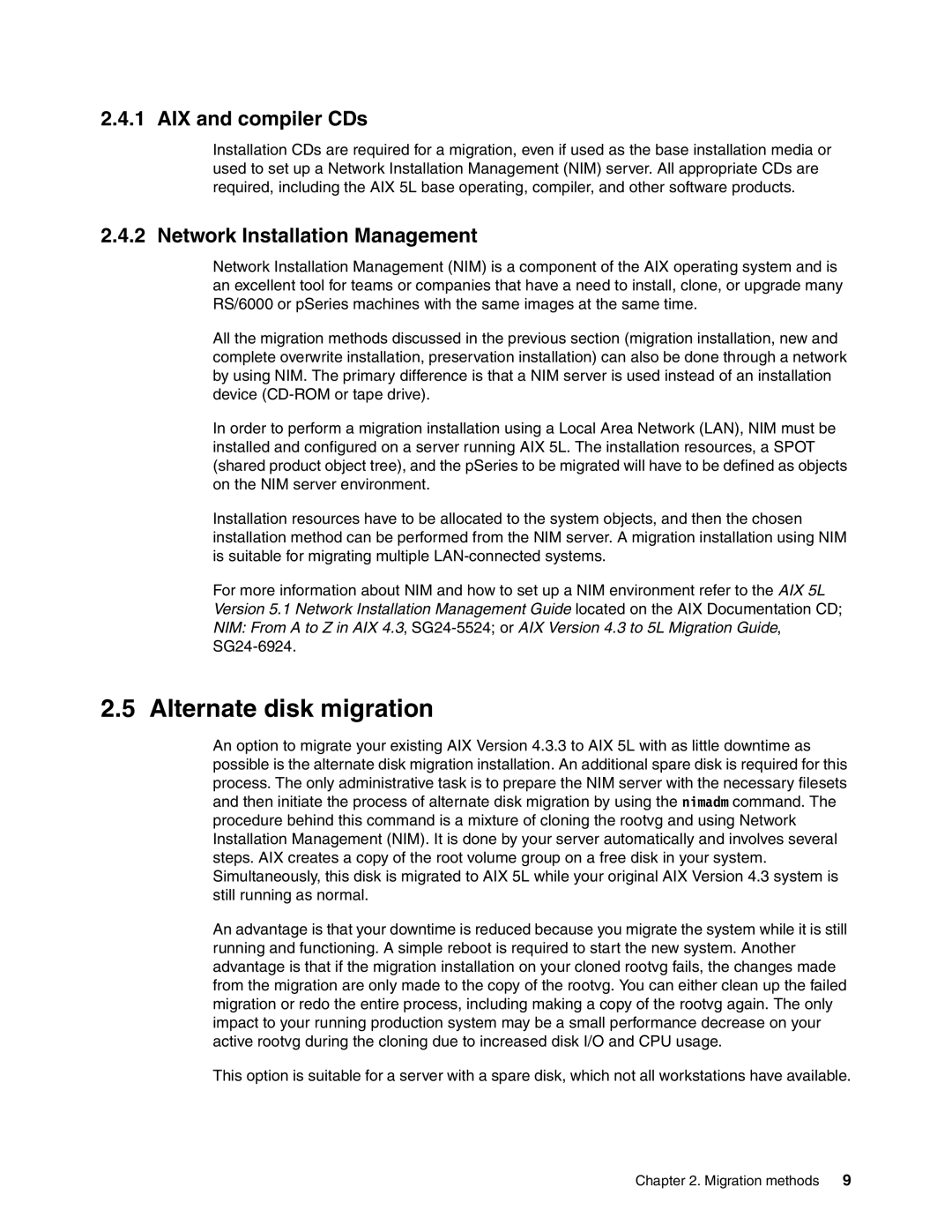2.4.1 AIX and compiler CDs
Installation CDs are required for a migration, even if used as the base installation media or used to set up a Network Installation Management (NIM) server. All appropriate CDs are required, including the AIX 5L base operating, compiler, and other software products.
2.4.2 Network Installation Management
Network Installation Management (NIM) is a component of the AIX operating system and is an excellent tool for teams or companies that have a need to install, clone, or upgrade many RS/6000 or pSeries machines with the same images at the same time.
All the migration methods discussed in the previous section (migration installation, new and complete overwrite installation, preservation installation) can also be done through a network by using NIM. The primary difference is that a NIM server is used instead of an installation device
In order to perform a migration installation using a Local Area Network (LAN), NIM must be installed and configured on a server running AIX 5L. The installation resources, a SPOT (shared product object tree), and the pSeries to be migrated will have to be defined as objects on the NIM server environment.
Installation resources have to be allocated to the system objects, and then the chosen installation method can be performed from the NIM server. A migration installation using NIM is suitable for migrating multiple
For more information about NIM and how to set up a NIM environment refer to the AIX 5L Version 5.1 Network Installation Management Guide located on the AIX Documentation CD; NIM: From A to Z in AIX 4.3,
2.5 Alternate disk migration
An option to migrate your existing AIX Version 4.3.3 to AIX 5L with as little downtime as possible is the alternate disk migration installation. An additional spare disk is required for this process. The only administrative task is to prepare the NIM server with the necessary filesets and then initiate the process of alternate disk migration by using the nimadm command. The procedure behind this command is a mixture of cloning the rootvg and using Network Installation Management (NIM). It is done by your server automatically and involves several steps. AIX creates a copy of the root volume group on a free disk in your system. Simultaneously, this disk is migrated to AIX 5L while your original AIX Version 4.3 system is still running as normal.
An advantage is that your downtime is reduced because you migrate the system while it is still running and functioning. A simple reboot is required to start the new system. Another advantage is that if the migration installation on your cloned rootvg fails, the changes made from the migration are only made to the copy of the rootvg. You can either clean up the failed migration or redo the entire process, including making a copy of the rootvg again. The only impact to your running production system may be a small performance decrease on your active rootvg during the cloning due to increased disk I/O and CPU usage.
This option is suitable for a server with a spare disk, which not all workstations have available.
Chapter 2. Migration methods | 9 |
